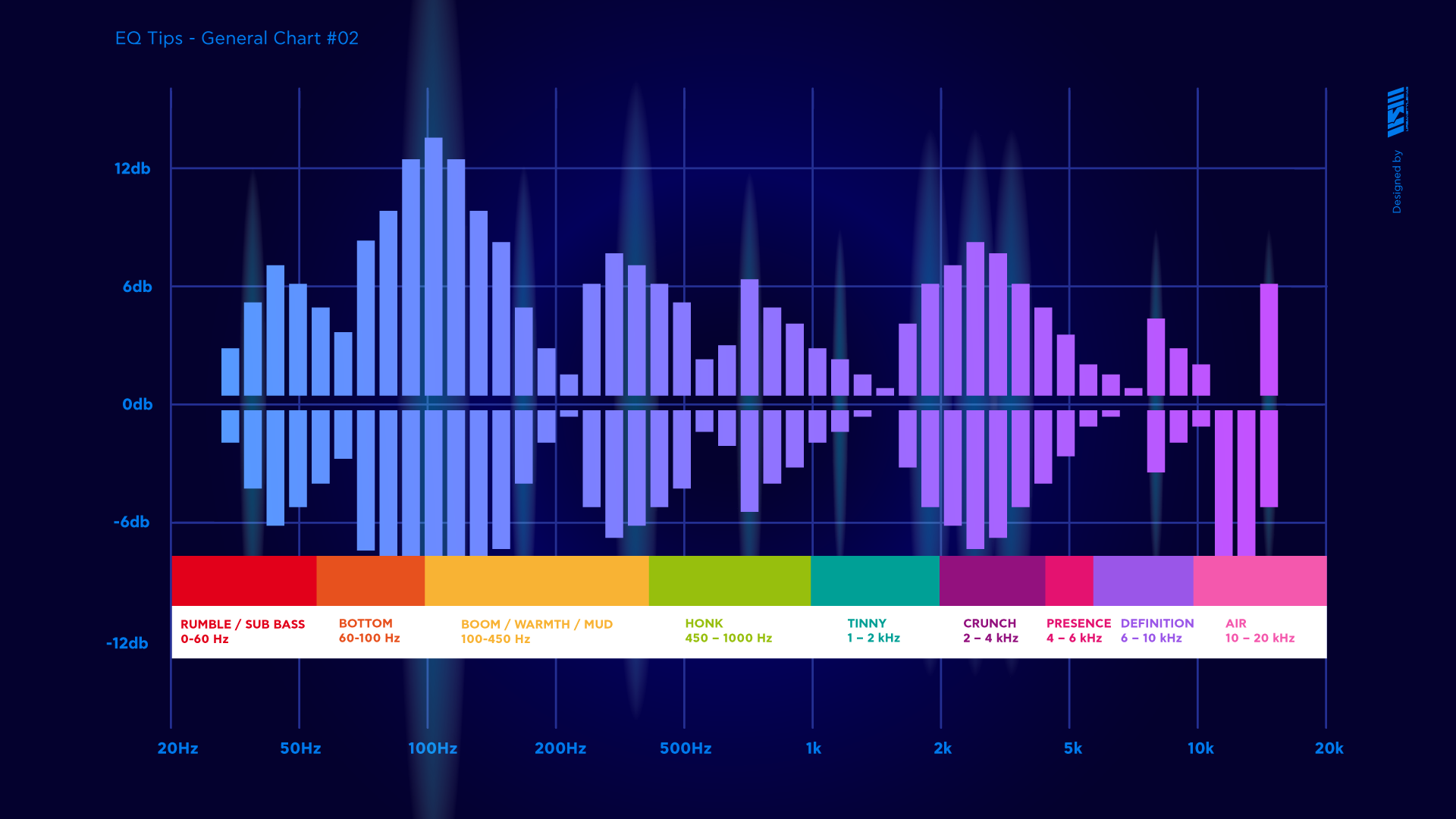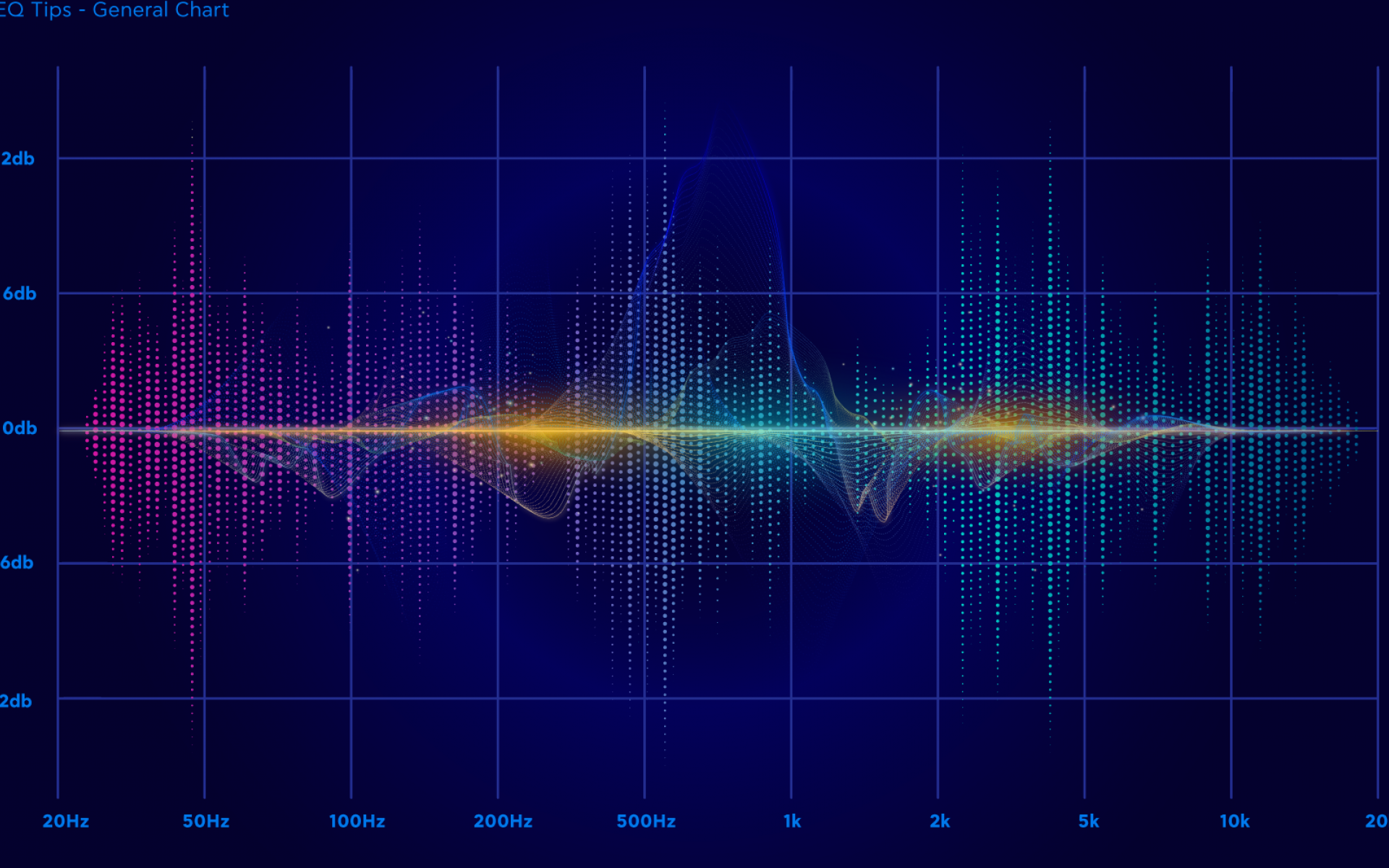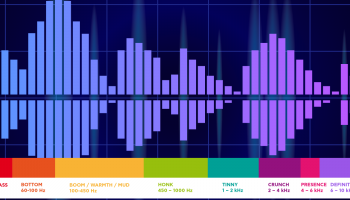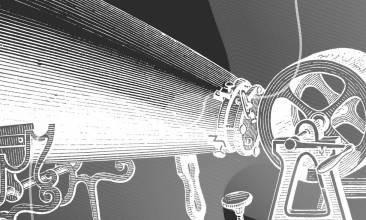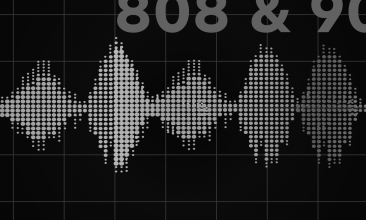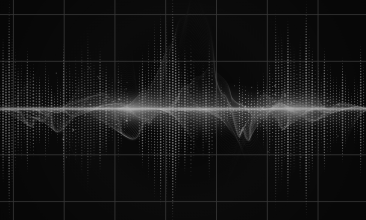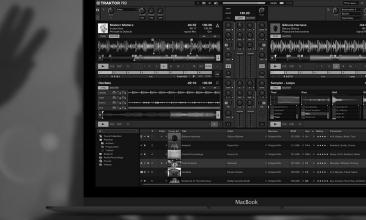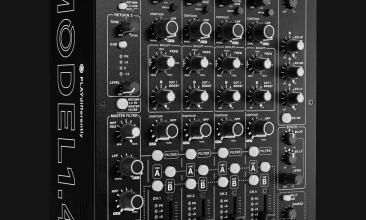EQ Tips - General Chart part two
Electronic music production tips
RUMBLE / SUB BASS 0-60 Hz
Most sounds in this frequency range more felt than heard. Be careful while mixing here as too much sub bass can make your mix sound muddy. Cutting everything below 25-45 Hz is a standard practice to reduce the rumble and preserve headroom. Avoid boosts here.
BOTTOM 60-100 Hz
This is where the bottom or “chest punch” of the bass and kick drum lies. Boost 2-3 dB within 60-90 Hz range with a low Q setting if more energy is needed, but don’t overdo it.
BOOM / WARMTH / MUD 100-450 Hz
Boost 100-170 Hz range for more punch. Boost 130-220 Hz to add warmth and fullness. Check 250-450 Hz range for mud, boost to bring fullness. Too much energy in the 100-450 Hz range make things sound muddy and boomy, while too little make them sound thin.
HONK 450 – 1000 Hz
You may eliminate many of the harsh, “honky” and boxy characteristics of the tone with a centered, wide cut in the 450-1 kHz range. By making cuts on some instruments you can bring more clarity to the bass within the overall mix.
TINNY 1 – 2 kHz
Too much in the 1-2 kHz range make things sound tinny or horn-like. You should be careful boosting here, especially on vocal tracks. Excess in this area can cause undesirable listener fatigue. Boost at 1.4-1.5 kHz can improve the intelligibility of bass and piano.
CRUNCH 2 – 4 kHz
This is where you’ll find the attack tones of percussive and rhythm instruments. Instruments that struggle to cut through the mix may be adjusted here for more presence. Excess in this area can cause undesirable listener fatigue.
PRESENCE 4 – 6 kHz
The 4-6 kHz range is responsible for clarity. Boosts here can add edge to electric guitars and drums. Make sure to check the 5-6 kHz range for sibilance. Boost in the 4-7 kHz range can also add air.
DEFINITION 6 – 10 kHz
Try boosting at around 6 kHz to add more definition to vocal and guitar tracks. Boosts in this range can add edge to synths, string instruments and drums. Too much boost around the 5-8 kHz range tend to sound sibilant.
AIR 10 – 20 kHz
Boosting this range can add extra air and sparkle to your instrument or overall mix. Excess in this area can cause undesirable listener fatigue and create an extremely shrill tone. Cut frequencies above 18 khz to reduce hiss noise.
Kudos to: www.PausePlayRepeat.com
